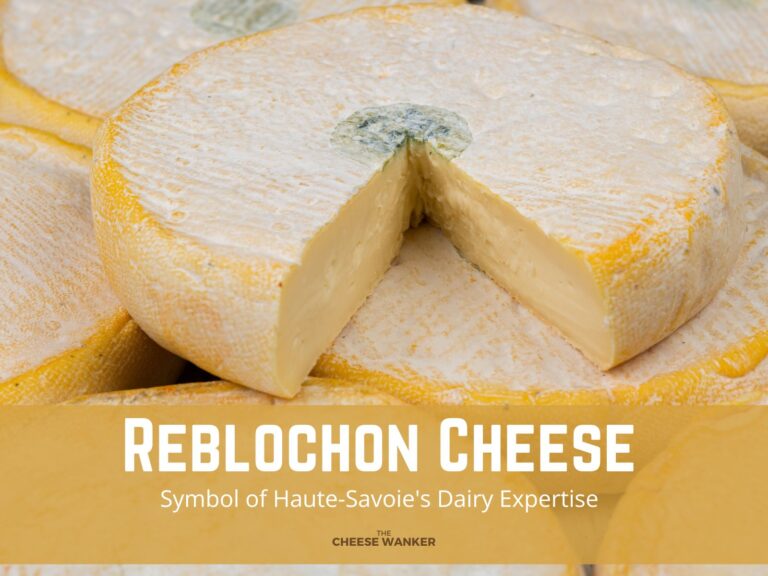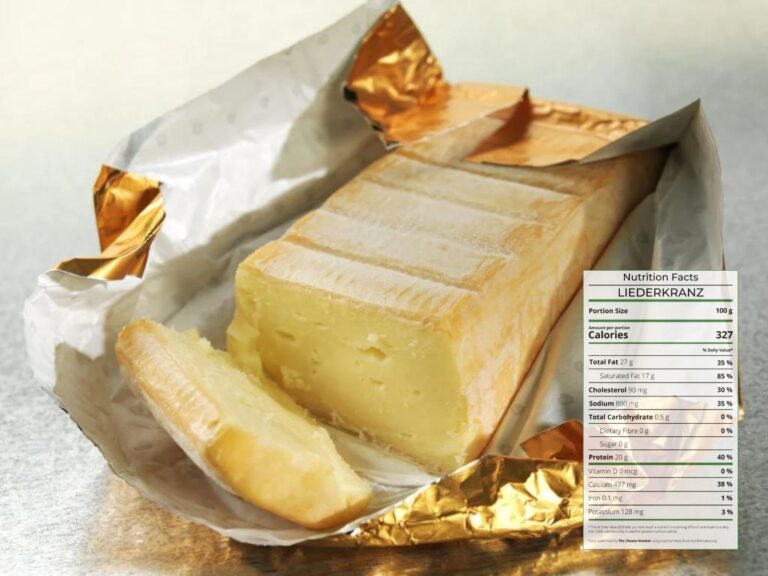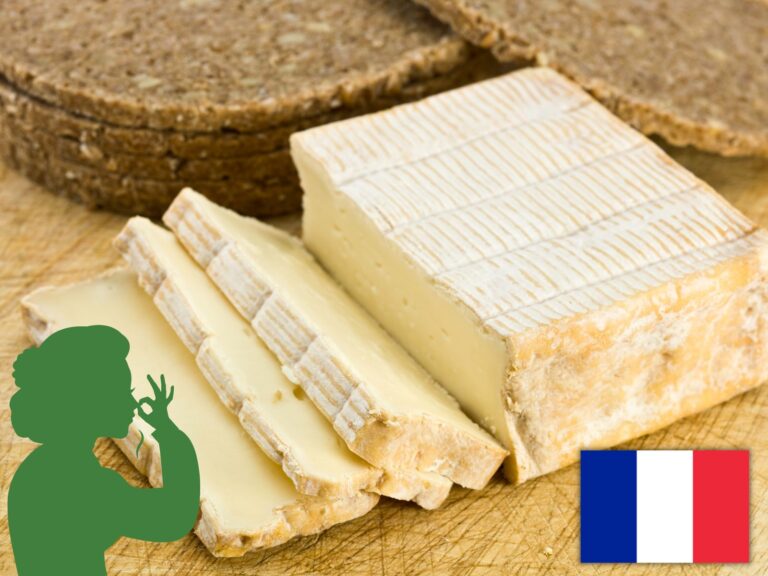Anyone who thinks that blue cheese is stinky has not met a soft oozy washed rind cheese! Read on to learn about the history of washed rind cheeses. And discover some of the best examples from around the world.
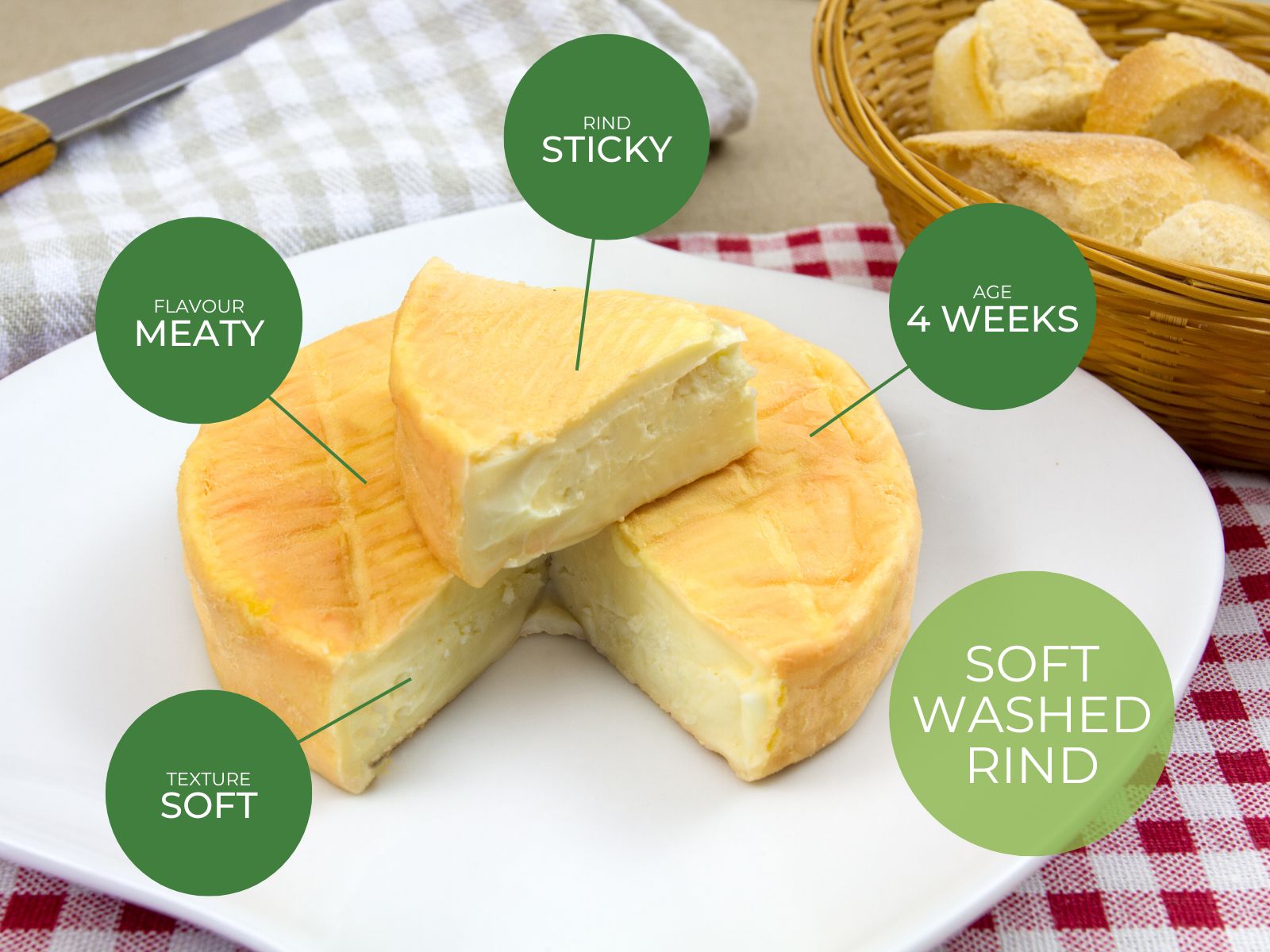
SEE ALSO: The 8 different types of cheese according to the French system →
What is a washed rind cheese?
The term “washed rind” can describe any cheese that has been washed with a liquid mixture during maturation. After the cheesemaker has formed their cheese, they moisten the outside (rind) with a damp cloth or a brush.
This process takes place at different intervals depending on the cheese and can vary from twice daily to once a week.
The liquid most commonly used is brine (a salt water mixture) but various alcohols (e.g., wine, beer and brandy) can also be used. In some cases, cheesemakers and affineurs (person who matures cheese) will even add some culture to their wash.
Overall, this process changes the conditions on the surface on the cheese to favour the growth of different types of bacteria. And those bacteria play a significant role in shaping the characteristics of the final cheese.
Why are washed rind cheeses so smelly?

Historically, scientists had identified Brevibacterium linens as the main reason for the unique organoleptic qualities of washed rind cheeses. However, more recent research has shown that the main species of bacteria that proliferate on the rind of washed cheeses is actually Brevibacterium aurantiacum.
B.aurantiacum is a subspecies of B.linens and thrives in a salty, moist and low acidity environment. And that is exactly what washed rind cheeses provide. Indeed, it is present on the rind of many iconic washed rind cheeses.
Besides, the bacterium produces carotenoids that create the brick red/orange tinge on the cheese’s rind.
And it also makes a significant contribution to their unique aroma and flavour. You can read more about methionine, the colourless gas that is responsible for this unique smell by clicking here.
Different types of washed rind cheeses
When we think of washed rind cheeses, most people will imagine a bright orange soft cheese with a strong aroma. But that is actually only one category of cheeses that are washed during maturation. Let’s have a look at the two main types of washed rind cheeses.
1. Soft washed rind cheeses
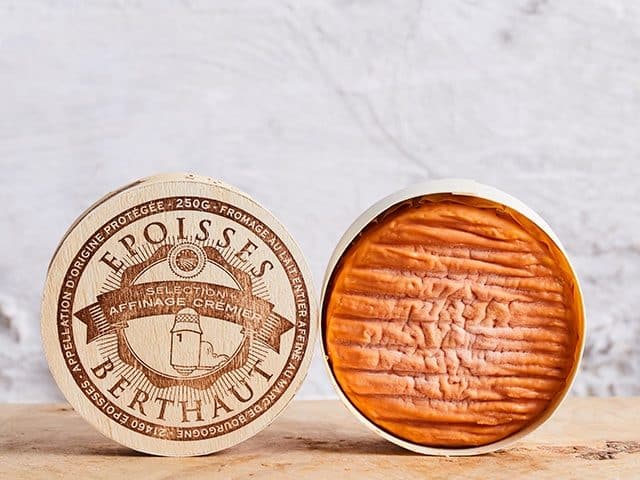
As a matter of fact, soft washed rind cheeses date back to the 13th century when they were first made by monks. Because of this, we still refer to them as monastic or trappist cheeses. In those days, monks would use their excess milk to make cheese and store them in their cellars.
Due to the atmospheric conditions, their cheeses would often dry out and start to crack as they mature. Overall, this would develop unfavourable qualities of texture, flavour and aroma.
The solution that the monks developed was to wash their cheeses in a liquid they had in abundance. Indeed, they would use low-alcohol spirits and beer to add moisture back to the surface of their cheeses.
The reason why they did not use water was because of the dubious water quality in the French lowlands at the time.
In addition to this, Benedictine and Cistercian monks weren’t allowed to eat meat. Instead, they developed cheeses that would have brothy and meaty qualities to satisfy their cravings. We’ll get back to the flavour of washed rind cheeses later.
As monastic cheeses mature, the B.aurantiacum breaks down the texture to create a creamy and oozy paste. Also, the outside of the cheese gradually develops a sticky, orange natural rind that struggles to hold in the ripe paste.
2. Pressed washed rind cheeses
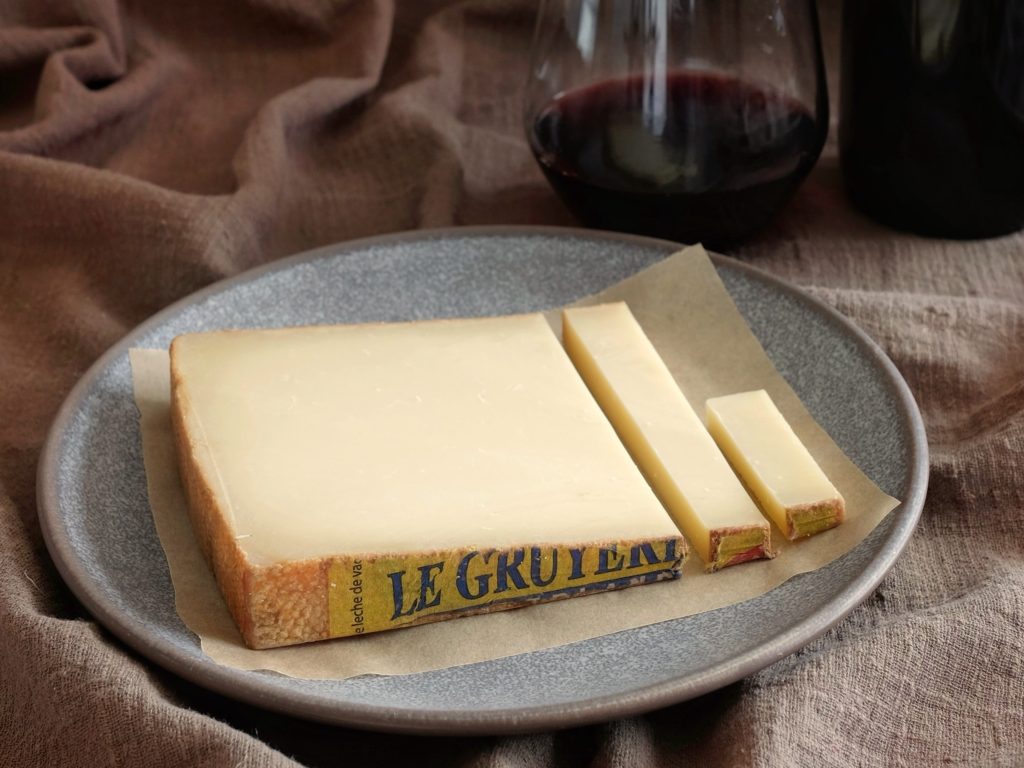
Next, let’s learn about pressed washed rind cheeses. Now, you might be surprised to learn that this category includes various mountain cheeses such as Gruyère and Raclette. And the history of their development is very different to that of monastic soft cheeses.
Indeed, alpine cheesemakers from France and Switzerland would make cheese at high altitudes using the milk of their own animals. And the high humidity and cold temperatures would cause a number of undesirable moulds to grow on their wheels.
In a similar way to the monks, the cheesemakers chose to wash their cheeses to prevent such mould from growing. Since they had access to pure spring water, they chose to use water (and a bit of salt) to brush their cheese. By doing so, they would successfully remove the unwanted moulds.
Instead, they created the ideal surface environment for B.aurantiacum to grow. Once again, the bacterium plays an important role in the appearance, texture and flavour of the cheeses.
What washed rind cheeses taste like
When it comes to smear-ripened cheeses, the smell is often much more robust than the flavour. Indeed, you can expect rich savoury, animal, yeasty and meaty flavours. B.aurantiacum either creates or accentuates those qualities in most monastic or trappist cheeses.
As for pressed washed rind cheeses, you can expect a myriad of flavours that vary significantly from one cheese to another. For example, a young Comté exhibits subtle herbaceous, floral and sweet flavours. Whereas a mature Gruyère can be savoury, fruity and nutty.
Examples of washed rind cheeses
Washed rind cheeses originate from continental Europe but have spread around the world. Let’s have a look at some great modern cheeses from a few different countries.
France

Since it is the birthplace of monastic cheeses, it is not surprising that there are so many fine examples still is circulation today. Look out for Epoisses de Bourgogne, Maroilles, Livarot, Pont l’Evêque and Munster. Those soft washed rind cheeses will definitely knock your socks off!
If you’re more on the hunt for some subtle cheeses, Reblochon de Savoie is a gorgeous pressed uncooked washed rind cheese. Some other spectacular mountain cheeses are Comté, Beaufort, Morbier and Raclette de Savoie.
Belgium
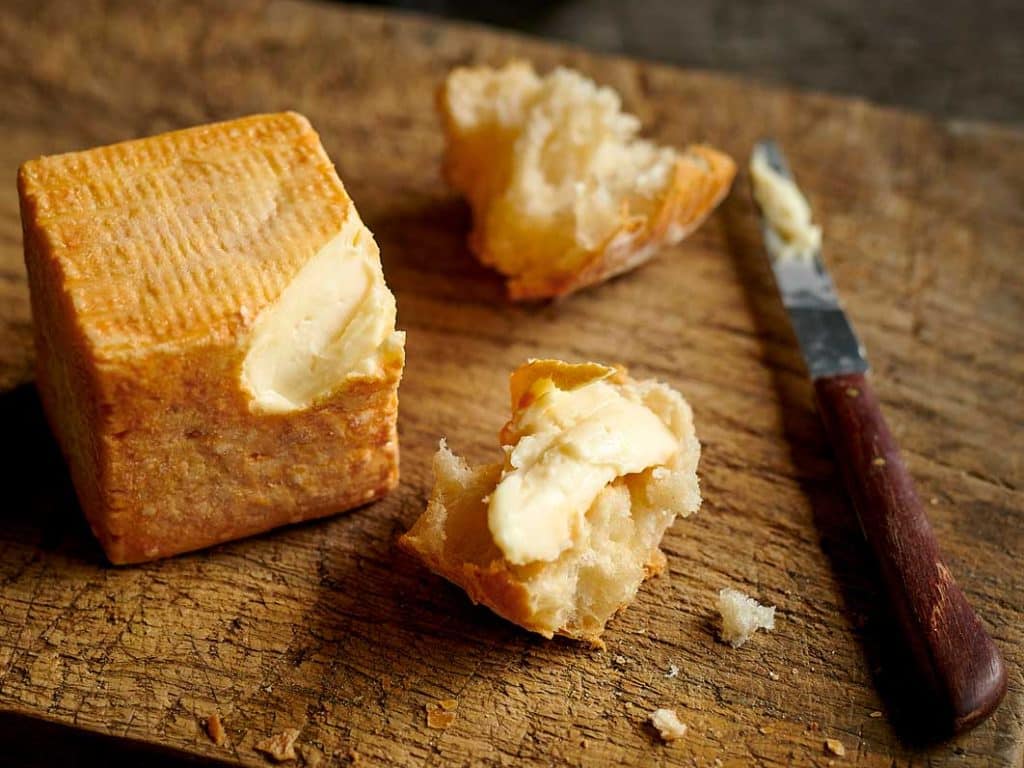
Belgium’s most famous cheese might just be the small, square washed rind, Herve. This soft monastic cheese dates back to the 13th century and gets its name from a small town called Herve. To this day, cheesemakers wash Herve in a beer solution during maturation in cellars.
When young, Herve’s aroma is mild and its flavour sweet. As the cheese matures, its aroma becomes yeastier and it develops a spicier flavour profile.
Switzerland
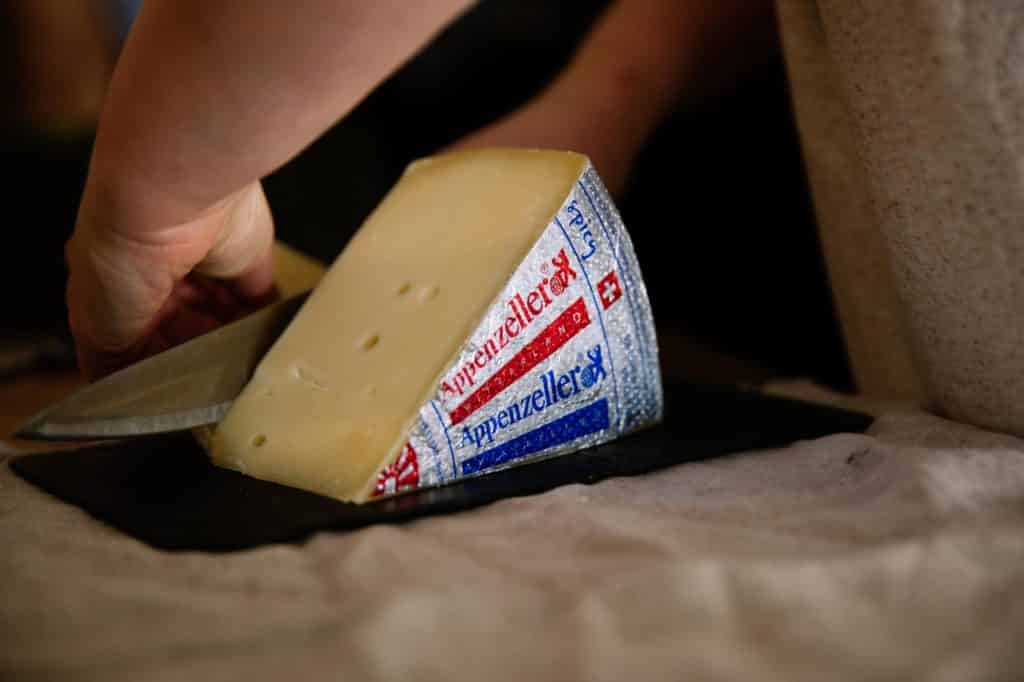
Switzerland is home to some of the most famous pressed washed rind cheeses in the world. Indeed, Gruyère, Appenzeller, Raclette du Valais and l’Etivaz all call this small landlocked nation home. The texture, aroma and flavour of those cheeses are incredibly complex and varied.
You can read more about the best of the best Swiss cheeses here.
Italy
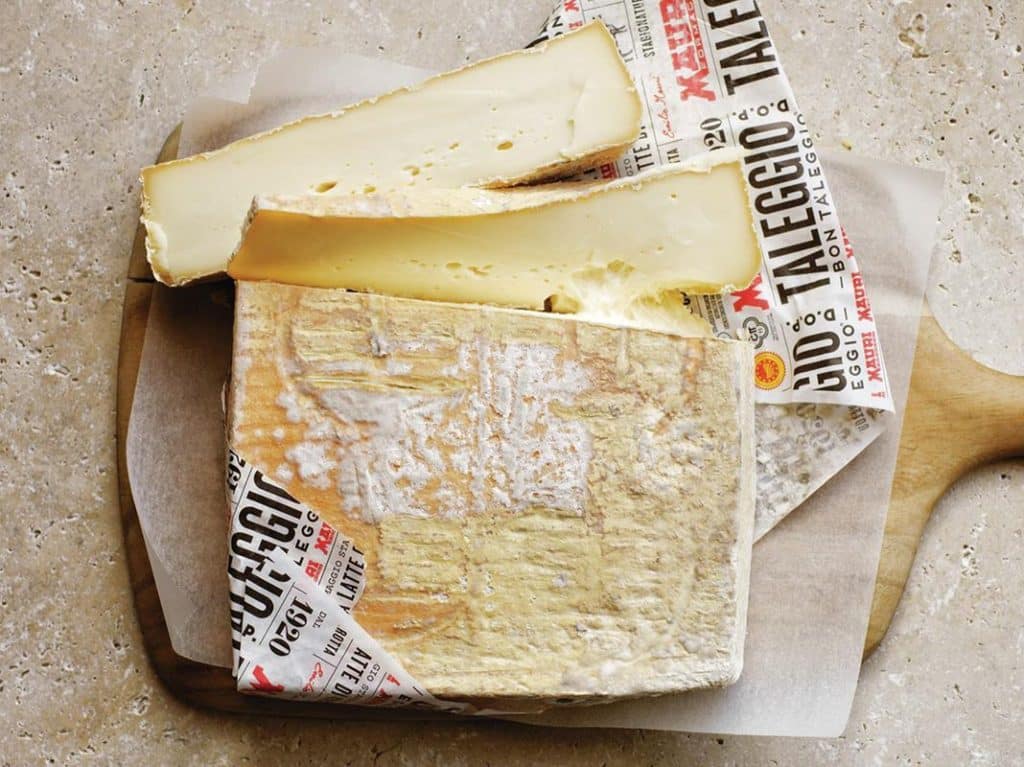
The most famous soft washed rind cheese from Italy would have to be Taleggio. This iconic square cheese originates finds its roots in 10th century Lombardia. To this day, local cheesemakers steam their cheese bricks and then gently wash them in salt water.
Overall, Taleggio has a mild yeasty aroma and a rich flavour of cured meats and truffles.
United Kingdom

The UK is part of what we like to call the New World of washed rind cheeses. Indeed, the reputation of one of their finest far exceeds their shores. Stinking Bishop (and what a fitting name!) is a soft washed rind cheese that comes from Gloucestershire.
During its maturation, an affineur washes each wheel of cheese in a pear perry which imparts a stunning aroma and flavour to the cheese.
England is also home to a beautiful pressed washed rind cheese called Ogleshield. This particular cheese comes from Somerset and is inspired by the recipe for Raclette. In a similar manner to the French/Swiss cheese, Ogleshield is washed in brine.
This imparts a pungent aroma to the cheese and a savoury flavour that is reminiscent of chicken broth.
How to serve washed rind cheeses
Most soft and pressed washed rind cheeses are excellent additions to any cheese board. Just make sure that none of your guests are put off by the strong aroma. Did you know that Epoisses de Bourgogne smells so strongly that people created an urban legend that it had been banned on the Métro in Paris?
Some great accompaniments are rye bread, a crunchy baguette, apple, pear and onion relish.
Some of the most famous pressed washed rind cheeses such as Raclette and Gruyère are also very frequently used in cooking. As you would know, Raclette is both a cheese and a dish where it is melted and scraped onto potatoes and meat.
As for Gruyère, it is a traditional ingredient in the Swiss Fondue recipe of Moitié-Moitié together with another washed rind cheese, Vacherin Fribourgeois.
Can you eat the rind?
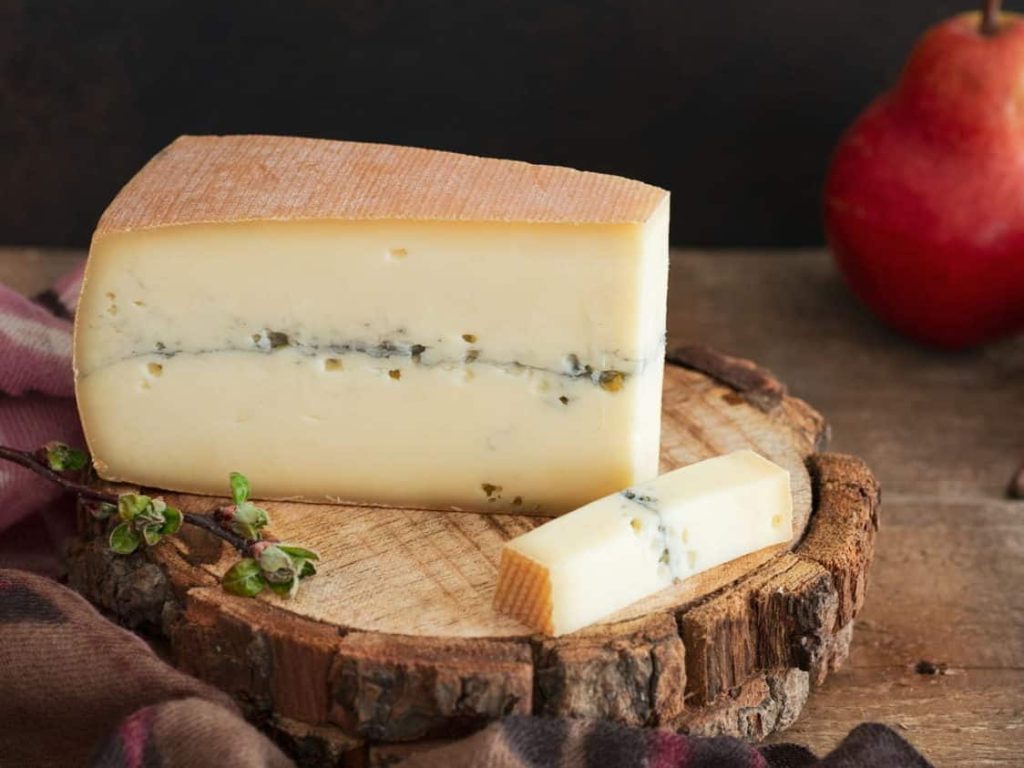
The short answer to this question is yes, but it does come down to preference. In the case of soft cheeses such as Epoisses de Bourgogne, the most intense flavour comes from the rind. So, if you want to experience the cheese in all of its glory, then you will want to try the rind.
Having said that, some people prefer to stick to the more subtle flavours. If you fall in this category, you might want to steer clear of the rind.
When it comes to pressed cheeses such as Raclette and Morbier, the rind tends to become quite sticky and crunchy as the cheeses mature.
Once again, it is often packed with flavour but many cheese lovers find their texture to be quite off-putting. In a similar way to the soft cheeses, it is a matter of personal preference.
Pairing washed rind cheeses

Because of their robust flavours, you will want to pair a washed rind cheese with a beverage that is equally as bold. A traditional pairing for monastic cheeses such as Maroilles and Livarot is a robust Amber Ale or a sweet Calvados. Moreover, Epoisses pairs well with Marc de Bourgogne or a Dark Belgian Ale.
On the other hand, the more subtle flavours in the pressed cheeses such as Raclette, Comté, Beaufort and Gruyère will marry well with a Vin Jaune from Savoie, Viognier or Chardonnay.
What’s your favourite washed rind?
Now you know everything about washed rind cheeses. While they historically come from France, Belgium and Switzerland, they are now made all around the world. So, what is your favourite washed rind cheese? Let me know in the comments.
